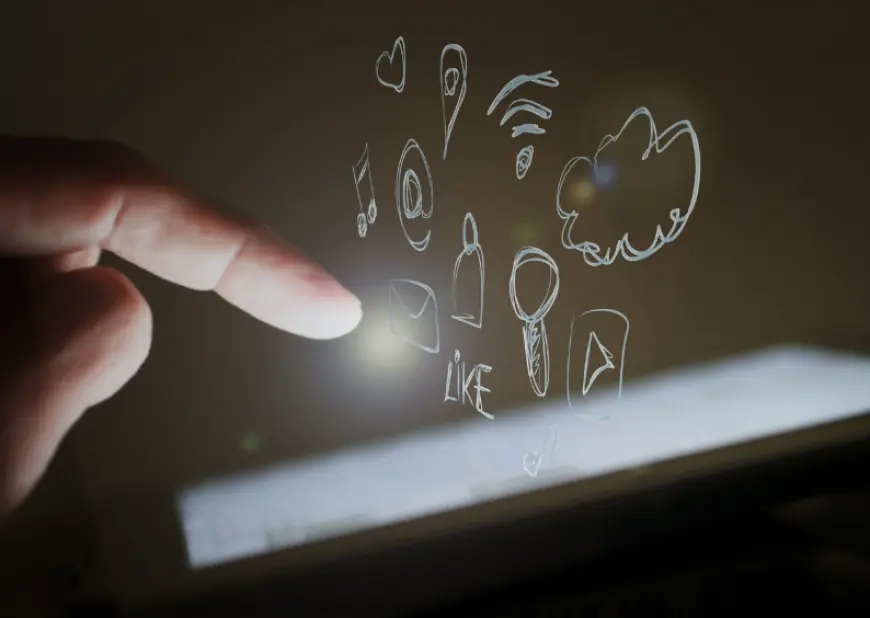5 Tips To Create Prototypes for Mobile Apps
Discover the top app prototyping tips and best practices to successfully develop a mobile app prototype that attracts investors.

Imagine you've come up with an idea and have thought of a concept. It is necessary to have something more accurate than an image that allows you to "touch" it and see what your item looks like. The stage of app prototyping is an essential step towards testing your concept. The designer designs an interactive prototype and draws each screen of the app. Then, an application is designed to combine the screens to form a model. This creates connections and relationships.
Investors in mobile apps are greeted by myriad proposals in their inboxes each day. Knowing how to create an app and how to launch an initial prototype of your mobile application can distinguish your company from others and offer an edge when making your pitch to prospective investors. Given the wide range of smartphone models and screen sizes, designing and testing mobile applications is an essential element of the design process.
UX teams need to thoroughly examine designs and solve problems with usability before handing them to engineers. The process of developing an app can be costly and take a long time. It's much faster and simpler to design a new prototype than to redesign the finished product.
What Is a Mobile App Prototype?
The mobile app prototype shows the final product's aesthetics and functionality. Mobile prototypes help UX teams observe how design and user flow concepts perform, examine screens of various sizes, and observe how users interact with them. UX teams develop mobile app prototypes during design, ranging from simple paper models to fully functioning, high-quality prototypes.
Prototypes' role during app development can't be understated. They function as visual guides to developers and a demonstration tool for stakeholders. They assist in collecting user feedback, which can be crucial in fine-tuning a user experience and design. They cut time and expenses through early identification of changes throughout the development process.
Benefits Of Mobile App Prototyping
In this section, we will discuss the benefits of mobile app prototyping:
Better Clarity
A clear understanding of the app you're likely to create is crucial before beginning your app's development. The shared understanding of what the app is designed to do, user flow and overall look and feel can be difficult to attain without visual aid. That's why a prototype of an app could be so beneficial.
In constructing the interface, interactions, and visuals in the design, everyone can interact and view the application before investing the money needed to build it. It ensures that the app's purpose works precisely as intended.
Better Collaboration
The prototyping process allows teams to work together and test their ideas quickly and effectively. Turning change rounds into a much quicker process is possible because all work is completed in the design stage rather than development.
Prototypes can be released several times per week. Hence, developers can make multiple variations until the app is optimal. Regular discussions between UX designers, product managers, and developers ensure that the idea in the initial prototype will be practical with all stakeholders once the project is in the development stage.
More Predictability
Once the group has agreed on a common goal for the application, demonstrated by the prototype, it is possible to develop the app, which is much more predictable. In the beginning, the team developing can make precise estimates.
A complete understanding of the features that will be built is much simpler to attain when engineers can browse a prototype interactively and read the specifications for functional use. Higher-confidence estimates will determine the timeline and budget for the project and, consequently, will be more reliable than without the prototyping.
Simpler Acceptance
Enterprise organizations face several challenges. One of the most demanding aspects of creating a mobile application is gaining the alignment of stakeholders. There are often various groups with influence over technologically advanced decisions and others who doubt the necessity of expensive technological advancements.
One thing is for certain: it's easier to persuade a group of users to invest $100,000 in an app if it is clear what the app will look like and how it functions instead of reading an entire set of functionality specifications and ensuring them that it will work great. Particularly when there are various levels of internal stakeholders you need to pitch, visual representations can prove valuable in demonstrating the app's value.
Mobile App Prototyping Tips and Tricks You Need To Know
Mobile app prototyping is a fun element of the process of app designing. Designers can see their concepts come to life and gain invaluable insights through usability tests. Below are five suggestions to enhance your mobile app prototyping services.
Test Early, Test Often
Testing is an essential goal for teams that create mobile app prototypes. Without testing, UX teams can't validate designs or uncover problems with usability. UX designers should use prototyping on paper to try the most feasible ideas in the initial design process. Teams need to benefit from the fact that testing using pencil and paper can be inexpensive. Testing even the most outrageous thoughts can stimulate creativity, leading to creative discoveries.
Prototyping at high fidelity enables UX teams to design mobile apps to satisfy the demands of users. Usability studies are expensive, therefore, researchers must define clear goals and targets and test those who can provide helpful feedback.
Include Real-Time Content And Create User Flow
In order to visualize your thoughts and try them out in the shortest time possible, one suggestion is to include authentic content and interaction. The more genuine content you've created, the better the results of testing your thoughts will be. It is recommended to include as much detail as possible to accurately estimate the assumptions you have made.
User flow is among the main elements that determine the extent to which a customer decides to purchase your product. To evaluate your users' flow, sketch the entire flow and then go through it yourself to determine if the page-by-page instructions are user-friendly enough and guide your user along the route you wish to lead them along.
Optimize Your Prototype For Performance
Optimization is usually associated with mobile apps rather than prototypes. Given the capabilities of the latest mobile devices, programmers must ensure that apps do not hog resources, leading to slow or unstable performance.
Optimization can be an issue when it comes to mobile application prototyping. Wireframing applications have the habit of causing developers to ignore the performance. Suppose you're looking to incorporate complicated interactions and fluid animations. In that case, you should optimize images, decrease the number of layers, and take additional actions to ensure your prototype is short and streamlined.
Take Advantage Of Design Patterns And Libraries
Good design requires focusing on details that could seem obsessional. Sometimes, minor tweaks are needed to turn an ordinary button click into an incredibly pleasing one. Minor adjustments to the layout could make the difference between a functional, feature-packed display and a messy one.
While obsessing about details later in the development process can help, it may hinder the project if it happens too at the beginning of the mobile application design phase. It is essential to rapidly test the prototype or modify it to meet the concerns of users or any other feedback from stakeholder groups and, if needed, to throw it away and start again.
If you get too deeply into the design too early and get overly involved in the concept, consider the idea critically. You may not have enough time to test the design with users before making it into production.
Involve Other Departments
UX teams should not limit tests only to participants. Team members from other departments can be a great way to generate excitement over a new feature or product within a company. People from different UX departments could provide helpful comments that designers had not considered.
For example, marketing departments could suggest that forms for email require a first name and an email address field since personalizing the correspondence boosts conversion. Testing on prototypes internally can provide helpful feedback to help improve products for companies that UX teams may not receive from their users.
Conclusion
The app prototyping process remains an important lighthouse for mobile app developers. It is a tool to guide them through conversations, test ideas, and encourage innovation. If developers are conscious of potential obstacles, they can manage the exciting process of developing mobile apps by focusing on reality.
Modern toolkits can prototype and develop, revolutionizing the mobile app industry. However, design and development are now beginning to fall apart, causing an overhaul in the organization's structure. The most successful are those who harness new technologies to improve cooperation and speed up development. Try prototyping and testing and discover which methods work best for your business. Companies contemplating the possibility of building a mobile app. It is among the most effective strategies for moving your business toward a profitable mobile application.












